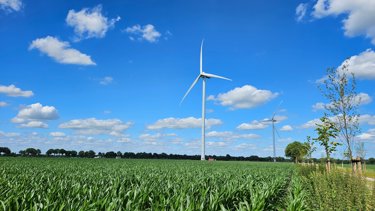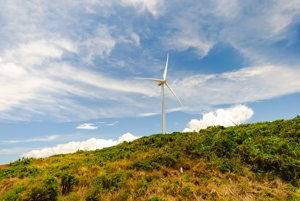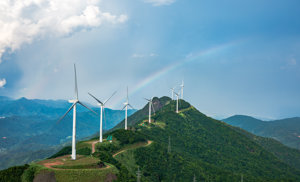
Carbon Offsetting.
Identifying and offsetting our environmental impact.
Compensating for our carbon emissions.
From 2022 to 2023, we were certified as a carbon neutral company by offsetting initiative Carbon Neutral Britain. They offset emissions from our business operations every quarter during this period and we are investing in carbon emission offsetting programmes as a proactive measure.
To receive our certification, we offset the whole carbon footprint of our operations (scope 1, 2 and 3) from 2022 to 2023 through seven Certified Emission Reduction (CER) offsetting initiatives.
In 2024 we will be continuosly updating the carbon offsetting projects we are investing in to compensate for the emissions generated by our business.
Learn more about some of the projects we supported from 2022 to 2023 as part of our offsetting programme and how our carbon emissions are calculated below.

Andes Mountains Hydro Power, Chile
Located in the Tinguiririca River upper valley, this hydroelectric project is around 120km south of Santiago, Chile. Known as La Confluencia, the 163 MW run of river hydro power plant utilizes the hydrological resources of the Tinguiririca, Portillo and Azufre Rivers, in a run of river scheme to generate and supply zero emission energy to the Chilean central electricity grid (SIC).
Project Impact and Secondary Benefits:
- The primary objective of the proposed project is to help meet Chile’s rising demand for energy due to its economic growth and to improve the supply of electricity.
- Through the "Tinguiririca Participa" grant program, the project directly finances proposals presented by community organisation, in areas such as healthcare, education, and social change.
- Reforestation of around 120 hectares around the site has been implemented, helping protect and improve the local flora and fauna.

Burgos Wind Farm, Philippines
The Burgos Wind Project is the largest wind farm in the Philippines. At the time it was built, it was also considered to be one of the largest wind farms in South East Asia. It is located in one of the best areas in the country to generate clean energy from wind.
Project Impact and Secondary Benefits:
- The project produces clean energy and displaces generation from other sources that contribute pollutants and greenhouse gas emissions to the environment.
- Engaging and empowering the community is a critical objective of the project. In fact, the team hosts a local radio program that discusses various topics with the local community, mostly on the protection and promotion of the environment.
- During construction, the Burgos Wind Farm generated a significant number of jobs, and today employs over 600 staff in the on-going management and maintenance of the wind farm and energy sites.

Rice Husk Power Project, Cambodia
The Angkor Bio Cogen (ABC) project is the first renewable energy project to utilize rice husk as biomass fuel for electricity generation in Cambodia, involves the operation of 2 MW new rice husk power generation plant in the Kandal province.
Project Impact and Secondary Benefits:
- Reduces overall GHG emissions through the reduction of methane emissions, replacing diesel power and donating surplus power to the local community.
- Contributed to the improvement of economic, social and environmental well-being of the community through providing reliable electricity access to the rice mill as well as the neighbouring business and community.

Huaneng Changyi Wind Farm Project, China
The purpose of the Huaneng Changyi Phase II Wind Farm Project is the generation of electricity from wind and the supply of this electricity to the North China Power Grid (NCPG, or the grid). The Project Activity has installed and is operating 33 wind turbines with a capacity of 1500 kW each.
Project Impact and Secondary Benefits:
- Produces clean energy and displaces generation from other sources that contribute pollutants and greenhouse gas emissions to the environment.
- Stimulate and accelerate the commercialisation of grid-connected wind power technologies and markets.
- Generated a significant number of jobs, and today employs over 400 staff in the on-going management and maintenance of the wind farm and energy sites.
Calculating our carbon footprint
Using the ISO 14064 and GHG Emissions Protocol Standards, our emissions are identified using three scopes of emissions:

Scope 1 - Direct emissions
Stationary and mobile source emissions (equipment and quantity combusted), company owned and leased vehicles (vehicle type and distance travelled), and refrigerant gas losses.
Results and impact
Our calculated carbon emissions for 2022 and 2023.


